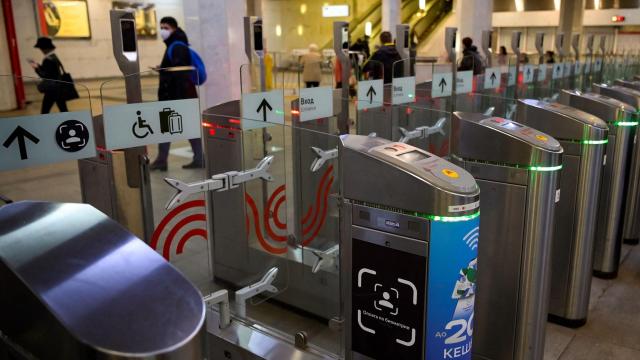Contactless payment systems are quickly becoming an ordinary part of our daily lives. As of this week, you can even pay for subway fares with your face. Before you ask where you can sign up, this new facial recognition payment system has debuted in Russia, sparking concerns that it will be used by authorities as a surveillance tool.
The city of Moscow on Friday announced the launch of Face Pay, a new facial recognition payment system, in all of its more than 240 its subway stations. Face Pay users can pay for their subway fare by looking at the camera on select turnstiles without the need of a card, phone, or cash. In a news release, Maxim Liksutov, the deputy mayor responsible for transport, said the city’s system was the first in the world to be deployed on such a large scale.
Nonetheless, Liksutov affirmed that the addition of the Face Pay system does not mean the city will be phasing out other payment methods. He added that using Face Pay was optional.
“There are no analogues of Face Pay in terms of quality and ease of use for the passenger anywhere in the world,” Liksutov said, according to an internet translation of his statement. “I would like to emphasise that Face Pay is just another way to pay for travel. Connection to the service is voluntary only if the passenger considers this payment method convenient for himself. Other payment methods will not go anywhere.”
To use Face Pay, riders must link their photo, credit or debit card, and transit card to the service in the Moscow subway app. While all that sounds easy, Moscow authorities warned interested users to register in advance because the process could take several hours.
The launch of Face Pay has created alarm among privacy activists, who worry that Russia is using facial recognition to obtain more control over its population. Stanislav Shakirov, the founder of the digital rights and freedom of information group Roskomsvoboda, told the Guardian that there is a need for full transparency on how Face Pay will work in practice.
“We are moving closer to authoritarian countries like China that have mastered facial technology. The Moscow metro is a government institution and all the data can end up in the hands of the security services,” he said.
Moscow, for its part, has assured the public that all information will be securely encrypted and that the cameras on the turnstiles read biometric data, not faces or other personal data. Considering that facial recognition biometric data “measures the unique patterns of a person’s face by comparing and analysing facial contours,” as explained by Norton, that’s not exactly comforting.
The fact that it’s being used in Russia, which Human Rights Watch recently said was expanding its use of facial recognition technology with no regulation, oversight, or data protection measures is equally concerning. Authorities have already accused innocent people of being criminals due to facial recognition technology, the organisation stated. They also use it to prosecute political opponents and peaceful protestors.
Moscow officials project that over the next two to three years, between 10 to 15% of subway passengers will regularly use Face Pay. If demand grows, the city will add more Face Pay turnstiles.
